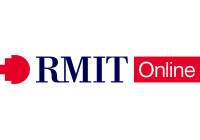Change is inevitable and constant in today's dynamic and competitive world. Organisations must adapt and innovate to survive and thrive in changing customer needs, market conditions, technological advancements, and environmental challenges. However, change can also be disruptive and stressful for those who implement and experience it. Therefore, managing people through change is a critical skill for leaders, managers, and HR professionals who want to ensure the success and sustainability of their organisations.
This blog will explore some key aspects of managing people through change.
Quick Links To Online Project Management Degree Courses
Southern Cross University
Master of Project Management online
- 2 years part-time
- $2,990 per unit, FEE-HELP available
- Jan, Mar, May, July, Aug, Oct
RMIT Online
Graduate Diploma in Project Management
- 16 months intensive, part-time
- Jan, Mar, May, July, Aug, Oct
- $3,840 per course, FEE-HELP available
Edith Cowan University
Graduate Certificate of Project Management Online
- 6 months (minimum) part-time
- Jan, Mar, May, Jul, Sept & Nov
- $13,020 FEE-HELP available
Understanding the Impact of Change on Employees and the Organisation
Change can positively and negatively impact employees and the organisation. On the positive side, change can create new opportunities, improve performance, enhance customer satisfaction, increase efficiency, foster innovation, and stimulate learning and development. On the negative side, change can cause uncertainty, anxiety, fear, anger, frustration, confusion, loss of control, reduced motivation, lower productivity, increased turnover, and decreased morale.
The impact of change on employees and the organisation depends on several factors, such as:
- The type and magnitude of change: planned or unplanned, incremental or radical, evolutionary or revolutionary.
- The context and culture of the organisation: how stable or turbulent it is, how supportive or resistant it is to change, and how aligned or misaligned its vision and values are with the change.
- The readiness and capability of the organisation: how prepared and equipped it is to cope with and benefit from the change, how flexible and adaptable it is to adjust to the new situation.
- The involvement and participation of employees: how informed and consulted they are about the change, how engaged and committed they are to the change process, and how empowered and enabled they are to contribute to the change outcomes.
Effective Communication Strategies For Guiding Teams Through Change
Communication is one of the most important tools for managing people through change. Effective communication can help to:
- Create a shared understanding of the need for change: why it is happening, what it entails, and the benefits and risks.
- Build trust and credibility: who is leading and sponsoring the change, their roles and responsibilities, and how are they accountable and transparent?
- Generate buy-in and support: how are employees involved and consulted in the change process, and how are their opinions and feedback valued and addressed?
- Provide clarity and direction: what are the goals and objectives of the change? What are the expectations and standards of performance?
- Offer guidance and support: what resources and tools are available for employees to cope with and succeed in the change process, and how are they trained and coached to develop new skills and competencies?
- Recognise and reward: how are employees acknowledged and appreciated for their efforts and achievements in the change process, and how are they celebrated and incentivised to sustain the change?
Some of the communication strategies that can be used to guide teams through change are:
Use Multiple Channels and Methods.
Such as face-to-face meetings, emails, newsletters, videos, podcasts, webinars, social media, intranet, bulletin boards, etc. Choose the most appropriate channel and method depending on the communication's purpose, audience, message, and timing.
Tailor the message to the audience.
Consider the needs, interests, concerns, and preferences of different groups of employees, such as senior managers, middle managers, front-line staff, etc. Use clear, simple, and consistent language that avoids jargon and ambiguity. Provide relevant and accurate information that answers the questions of who, what, when, where, why, and how.
Encourage dialogue and feedback.
Create opportunities for employees to ask questions, express opinions, share ideas, and provide suggestions. Listen actively and empathetically to their views and feelings. Acknowledge and address any issues or concerns that arise. Incorporate feedback into decision-making and action-planning. Communicate back the outcomes and follow-up actions.
Be honest and open
Be transparent and authentic about the change, share relevant information and updates, admit uncertainties and mistakes, and invite feedback and questions.
Use stories and examples.
Illustrate the vision and benefits of the change with concrete and relatable scenarios, show how the change has worked in other contexts or organisations, and highlight success stories and best practices from early adopters or champions of the change.
Importance of obtaining skills at the university
The university is a place to acquire academic knowledge and qualifications and develop essential skills that will help you succeed in your future career and life. Some of the skills that you can obtain at the university are:
- Critical thinking and problem-solving: these skills enable you to analyse complex issues, evaluate evidence, generate alternatives, and make informed decisions. You can develop these skills by engaging in academic research, writing essays and reports, participating in debates and discussions, and applying theories and concepts to real-world situations.
- Communication and collaboration: these skills enable you to express yourself clearly and persuasively, listen actively and respectfully, work effectively with others, and build positive relationships. You can develop these skills by giving presentations, joining clubs and societies, working on group projects, volunteering for causes you care about, and networking with peers and mentors.
- Creativity and innovation: these skills enable you to generate original ideas, find novel solutions, adapt to changing circumstances, and embrace new opportunities. You can develop these skills by exploring different disciplines and perspectives, taking elective courses or modules, pursuing your passions and hobbies, attending workshops and events, and seeking feedback and inspiration.
- Self-management and Resilience: these skills enable you to plan your time and resources, set your goals and priorities, monitor your progress and performance, cope with stress and challenges, and learn from your failures and successes. You can develop these skills by managing your workload and deadlines, balancing your studies and personal life, seeking support when needed, reflecting on your experiences and feedback, and celebrating your achievements.
Developing A Comprehensive Change Management Plan: Key Steps And Considerations
A change management plan is a document that outlines how a change will be implemented, managed, and evaluated in an organisation. It helps to ensure that the change is aligned with the organisational vision and strategy, has clear objectives and scope, has adequate resources and support, involves and engages the relevant stakeholders, and delivers the expected outcomes and benefits.
Some of the key steps and considerations for developing a comprehensive change management plan are:
- Define the change: what is the nature and purpose of the change, and what are the drivers and triggers for the change? What are the goals and objectives of the change, the scope and boundaries of the change, and what are the assumptions and risks of the change?
- Assess the impact: who are the affected parties and stakeholders of the change, how will the change impact them, what are their needs and expectations, what are their attitudes and perceptions, and what are their potential reactions and responses?
- Design the strategy: how will the change be communicated, how will the change be implemented, how will the change be supported, how will the change be monitored and controlled, and how will the change be evaluated and reviewed?
- Execute the plan: when will the change take place, who will be responsible for each task and activity, what are the roles and responsibilities of each team member, what are the resources and tools required for each task and activity, what are the milestones and deliverables for each task and activity.
- Evaluate the results: what are the criteria and indicators for measuring the success of the change, what are the methods and sources for collecting data and feedback, what are the findings and conclusions from the data analysis, what are the lessons learned and recommendations for improvement.
Empowering Employees To Embrace Change: Fostering A Growth Mindset And Resilience.
One of the biggest challenges of managing people through change is to help them overcome their fear of failure, uncertainty, and loss. Many people resist change because they have a fixed mindset, which means they believe their abilities and talents are innate and unchangeable. As a result, they avoid challenges, give up easily, ignore feedback, and feel threatened by the success of others. A fixed mindset can limit their potential, performance, and ability to cope with change.
Leaders and managers need to foster a growth mindset to empower employees to embrace change. A growth mindset believes one's abilities and talents can be developed through effort, learning, and feedback. People with a growth mindset embrace challenges, persist in the face of setbacks, seek feedback, and learn from others. A growth mindset can enhance their motivation, performance, and ability to adapt to change.
Some of the ways to foster a growth mindset among employees are:
- Model a growth mindset: demonstrate your willingness to learn new skills, take on new challenges, seek feedback, and improve yourself. Share your successes and failures and what you learned from them. Celebrate your efforts and progress, not just your outcomes.
- Provide constructive feedback: specific, timely, and actionable feedback that focuses on what employees can do to improve their skills and performance. Praise their efforts and strategies, not just their results. Help them identify their strengths and areas for improvement. Please encourage them to seek feedback from others as well.
- Encourage learning opportunities: offer employees opportunities to learn new skills, acquire new knowledge, and explore new ideas. Please provide them with resources and tools that support their learning. Please encourage them to take courses, attend workshops, read books, watch videos, etc., relevant to their goals and interests.
- Support risk-taking and experimentation: create a safe environment where employees can try new things, make mistakes, and learn from them. Please encourage them to test new approaches, methods, or solutions. Reward innovation and creativity, not just compliance and conformity. Avoid punishing or blaming employees for failures or errors.
- Promote collaboration and peer learning: create opportunities for employees to work with others with different skills, perspectives, and experiences. Please encourage them to share their knowledge, insights, and feedback. Facilitate mentoring, coaching, and peer support relationships among employees.
Another key factor that influences how employees embrace change is their level of Resilience. Resilience is the ability to bounce back from adversity, stress, and change. Resilient employees can cope with challenges, uncertainties, and losses more effectively than non-resilient ones. They can also recover faster and grow stronger from difficult experiences.
Some of the ways to foster Resilience among employees are:
- Build trust and psychological safety: establish a culture of trust and respect among employees and leaders. Ensure that employees feel valued and supported by their leaders and peers. Create a climate where employees can express their opinions, concerns, and emotions without fear of judgment or retaliation.
- Enhance well-being and self-care: promote employees' physical, mental, and emotional well-being. Please provide them with resources and benefits that support their health and wellness. Please encourage them to take care of themselves by engaging in activities that reduce stress and boost happiness, such as exercise, meditation, hobbies, etc.
- Develop coping and problem-solving skills: equip employees with skills and strategies that help them deal with stress and challenges more effectively. Teach them how to identify and manage their emotions, reframe negative thoughts and beliefs, cope with ambiguity and uncertainty, solve problems creatively and collaboratively, etc.
- Foster optimism and hope: inspire employees with a positive vision of the future and the benefits of the change. Help them see the opportunities and possibilities the change brings rather than the threats or losses. Help them set realistic and meaningful goals that motivate them to move forward.
Addressing Resistance To Change: Overcoming Obstacles And Mitigating Risks
Resistance to change is inevitable and natural, but it can also pose serious threats and challenges to the success of a change initiative. For example, resistance can slow down or derail the change process, undermine the credibility and authority of the change leaders, create conflicts and divisions among employees, and reduce the quality and effectiveness of the change outcomes.
Therefore, addressing resistance to change is vital for leaders and managers who want to ensure a smooth and successful transition. Addressing resistance to change involves identifying the sources and signs of resistance, understanding its reasons and motivations, and developing appropriate strategies and actions to overcome it.
Some of the ways to address resistance to change are:
Anticipate and prevent resistance.
Conduct a stakeholder analysis to identify who will be affected by the change, how they will be impacted, and their level of influence and interest. Assess their potential reactions and responses to the change, and plan how to address them. Communicate early and often about the change, its rationale, its benefits, and its impacts. Involve and engage employees in the design and implementation of the change, and solicit their feedback and input. Provide adequate training and support for employees to cope with and succeed in the change process.
Acknowledge and empathise with resistance.
Do not ignore or dismiss resistance as irrational or unimportant. Instead, recognise that resistance is a normal human reaction to change and reflects genuine concerns and emotions. Listen actively and respectfully to employees who express resistance, and try to understand their perspectives and feelings. Validate their concerns and emotions, and show empathy and compassion. Avoid being defensive or judgmental; do not argue or debate with them.
Educate and persuade resistance.
Provide clear and factual information about the change, its purpose, its benefits, and its impacts. Address any misconceptions or misinformation that may fuel resistance. Explain the logic and evidence behind the change decision and how it aligns with the organisational vision and strategy. Highlight the positive aspects of the change and the risks and costs of not changing. Use stories and examples to illustrate the vision and benefits of the change. Appeal to both rationality and emotion in your communication.
Negotiate and collaborate with the resistance.
Seek common ground and mutual interests with employees who resist the change. Identify and address any underlying issues or conflicts hindering their acceptance or support of the change. Explore and offer possible solutions or alternatives to satisfy their needs or expectations while achieving the change objectives. Finally, involve them in decision-making and action-planning, giving them autonomy and choice over how they will implement or experience the change.
Facilitate and reinforce resistance.
Help employees overcome barriers or challenges preventing them from adopting or adapting to the change. Please provide them with adequate resources, tools, and guidance to effectively perform their new roles or tasks. Recognise and reward their efforts and achievements in the change process, and celebrate their successes. Please provide constructive feedback, and help them learn from their mistakes or failures. Please encourage them to share their experiences, insights, and feedback with others and foster a culture of learning and improvement.
Leveraging emotional Intelligence To Support Employees During Times of Change
Emotional intelligence (EI) is the ability to understand and manage one's and other's emotions. EI is crucial for leaders and managers who want to support employees during change. EI can help leaders and managers to:
- Understand their emotions, reactions to change, and how they affect their behaviour and performance. Leaders and managers must know their emotional triggers, biases, and blind spots and how they influence decision-making and communication. They also need to regulate their emotions and cope with stress so that they can model positive and constructive attitudes and behaviours for their employees.
- Understand the emotions and reactions of employees to change and how they affect their behaviour and performance. Leaders and managers must empathise with employees experiencing fear, anxiety, anger, or sadness due to change. They must also recognise the signs of resistance, disengagement, or burnout among employees and address them appropriately.
- Communicate effectively and sensitively with employees during times of change. Leaders and managers need to be able to convey clear and consistent messages about the change, its rationale, its benefits, and its impacts. They must also listen actively and respectfully to employees' concerns and feedback and respond empathetically and compassionately. They also need to inspire and motivate employees with a positive vision of the future and acknowledge and appreciate their efforts and achievements in the change process.
- Build trust and rapport with employees during times of change. Leaders and managers must establish and maintain positive relationships with employees based on mutual respect, honesty, and transparency. They also need to be able to collaborate and cooperate with employees across different levels, functions, and locations. They also need to leverage employees' diverse skills, perspectives, and experiences and foster a culture of inclusion and belonging.
Evaluating The Success Of Change Management Efforts: Metrics, Feedback, And Continuous Improvement
The final aspect of managing people through change is to evaluate the success of the change management efforts. Evaluating the success of change management involves measuring the outcomes and impacts of the change, collecting data and feedback from various sources, and analysing and reporting the results. Evaluating the success of change management also involves identifying and implementing opportunities for improvement and ensuring that the change is sustained and embedded in the organisation.
Some ways to evaluate the success of change management are:
Define and track metrics for change management.
Select relevant and meaningful indicators that measure the progress and outcomes of the change management efforts. These include organisational performance, individual performance, and change management performance metrics. For example, organisational performance metrics can measure the achievement of the project goals and objectives, such as revenue, customer satisfaction, quality, efficiency, etc. Individual performance metrics can measure the adoption and adaptation of employees to the change, such as usage, compliance, productivity, engagement, etc. Finally, change management performance metrics can measure the effectiveness and impact of the change management activities, such as communication, training, coaching, feedback, etc.
Collect data and feedback from various sources.
Use different methods and tools to gather quantitative and qualitative data and feedback from various sources. These include surveys, interviews, focus groups, observations, assessments, tests, reports, analytics, etc. Collect data and feedback from stakeholders and groups involved in or affected by the change, such as leaders, managers, employees, customers, suppliers, etc. Collect data and feedback at different stages of the change, such as before, during, and after implementation.
Analyse and report the results
Use appropriate techniques and tools to analyse the data and feedback collected. These can include statistical analysis, content analysis, thematic analysis, sentiment analysis, etc. Identify and interpret the patterns, trends, and insights from the data and feedback. Compare and contrast the results with the expected outcomes and benchmarks. Report and communicate the results to relevant stakeholders and groups clearly and concisely. Use visual aids, such as charts, graphs, tables, etc., to illustrate and highlight the key findings and conclusions.
Identify and implement opportunities for improvement.
Based on the evaluation results, identify and prioritise areas and actions for improvement. These can include correcting errors or deviations, enhancing strengths or best practices, addressing gaps or weaknesses, resolving issues or conflicts, etc. Next, implement the improvement actions promptly and effectively, and communicate them to relevant stakeholders and groups. Finally, monitor and measure the impact and outcomes of the improvement actions, and adjust them as needed.
Ensure that the change is sustained and embedded in the organisation.
Ensure the change is fully adopted and integrated into the organisation's culture, processes, systems, and structures. Reinforce and reward employees' desired behaviours and performance that support the change. Provide ongoing training and support for employees to maintain and improve their skills and competencies related to the change. Review and update the policies, procedures, and guidelines that reflect the change. Finally, communicate and celebrate the achievements and benefits of the change, and share the lessons learned and best practices with others.
Conclusion
To ensure the success and longevity of their businesses, leaders, managers, and HR professionals must be adept at people management through change. It has the potential to open up new avenues of growth and development, as well as boost performance, efficiency, customer happiness, and innovation. Factors like change type and magnitude, organisational context and culture, organisational readiness and capability, employee involvement and participation, and good communication strategies all play a role in how much of an impact change has on employees and the organisation as a whole. The most crucial aspects of this text are the communication techniques that can be utilised to lead groups through transitions. These tactics centre on highlighting the significance of gaining these abilities at university, communicating with the target audience in a variety of ways, being receptive to their input, and so on.
Using these methods, you may get your staff on board with the change you're trying to implement, increase their confidence in you as a leader, motivate them to help you achieve your goals, give them a sense of purpose and purposeful work, and show your appreciation for their efforts. Your success in your future profession and in life depends on the knowledge and certifications you earn at university. Critical thinking, communication, teamwork, creativity, autonomy, and resiliency are all examples of these abilities. A change management plan describes the steps that will be taken to bring about, oversee, and assess a change within an organisation. It aids in making certain that the change is in line with the organization's vision and strategy, has well-defined goals and boundaries, is backed by sufficient means, actively involves and benefits the right people, and achieves its desired results.
Choose appropriate metrics, such as organisational performance, individual performance, and change management performance indicators, to track the development and results of your change management initiatives. Those affected by or invested in the transition should have their input and data analysed before being told what to do next. Learn to read the data and feedback for trends, patterns, and insights. Important steps include evaluating actual outcomes against desired ones, reporting and communicating those outcomes, implementing changes to better the situation, measuring and monitoring the results to see if they're having the desired effect, ensuring the change sticks, rewarding and reinforcing employees, providing ongoing training and support, reviewing and updating policies, procedures, and guidelines, and publicising and celebrating successes.
Content Summary
- Change is inevitable and constant in today's dynamic and competitive world.
- However, change can also be disruptive and stressful for those who implement and experience it.
- Therefore, managing people through change is a critical skill for leaders, managers, and HR professionals who want to ensure the success and sustainability of their organisations.
- This blog will explore some key aspects of managing people through change.
- Change can positively and negatively impact employees and the organisation.
- The type and magnitude of change: planned or unplanned, incremental or radical, evolutionary or revolutionary.
- Create a shared understanding of the need for change: why it is happening, what it entails, and the benefits and risks.
- The university is a place to acquire academic knowledge and qualifications and develop essential skills that will help you succeed in your future career and life.
- Critical thinking and problem-solving: these skills enable you to analyse complex issues, evaluate evidence, generate alternatives, and make informed decisions.
- A change management plan is a document that outlines how a change will be implemented, managed, and evaluated in an organisation.
- Leaders and managers need to foster a growth mindset to empower employees to embrace change.
- Model a growth mindset: demonstrate your willingness to learn new skills, take on new challenges, seek feedback, and improve yourself.
- Another key factor that influences how employees embrace change is their level of Resilience.
- Build trust and psychological safety: establish a culture of trust and respect among employees and leaders.
- Foster optimism and hope: inspire employees with a positive vision of the future and the benefits of the change.
- Therefore, addressing resistance to change is vital for leaders and managers who want to ensure a smooth and successful transition.
- Some of the ways to address resistance to change are:Anticipate and prevent resistance.
- Educate and persuade resistance.
- Negotiate and collaborate with the resistance.
- Seek common ground and mutual interests with employees who resist the change.
- Facilitate and reinforce resistance.
- Help employees overcome barriers or challenges preventing them from adopting or adapting to the change.
- Understand the emotions and reactions of employees to change and how they affect their behaviour and performance.
- Communicate effectively and sensitively with employees during times of change.
- Build trust and rapport with employees during times of change.
- Some ways to evaluate the success of change management are:Define and track metrics for change management.
- Select relevant and meaningful indicators that measure the progress and outcomes of the change management efforts.
- These include organisational performance, individual performance, and change management performance metrics.
- Collect data and feedback from various sources.
- Use appropriate techniques and tools to analyse the data and feedback collected.
- Identify and interpret the patterns, trends, and insights from the data and feedback.
- Compare and contrast the results with the expected outcomes and benchmarks.
- Report and communicate the results to relevant stakeholders and groups clearly and concisely.
- Identify and implement opportunities for improvement.
- Based on the evaluation results, identify and prioritise areas and actions for improvement.
- Finally, monitor and measure the impact and outcomes of the improvement actions, and adjust them as needed.
- Ensure that the change is sustained and embedded in the organisation.
- Ensure the change is fully adopted and integrated into the organisation's culture, processes, systems, and structures.
- Finally, communicate and celebrate the achievements and benefits of the change, and share the lessons learned and best practices with others.
FAQs About Project Management
Yes, it is possible to become a project manager without a degree in Australia. While some companies may require a degree or certifications, there are many opportunities for those who possess the necessary skills, experience, and certifications.
To become a project manager without a degree, you will need to possess strong communication, leadership, problem-solving, and organizational skills.
You will also need to have experience in project management or a related field, as well as relevant certifications.
There are many ways to gain experience in project management without a degree, including working on projects in your current job, volunteering for non-profit organizations, and taking on freelance or contract work.
You can also look for entry-level project management positions to gain practical experience.
There are many certifications available for project managers in Australia, including the Project Management Professional (PMP) certification, Certified Associate in Project Management (CAPM) certification, and PRINCE2 certification.
These certifications can help you demonstrate your skills and knowledge to employers and increase your chances of landing a project management role.
Becoming a project manager without a degree can offer several advantages, including the opportunity to gain practical experience, network with other professionals, and demonstrate your ability to learn and adapt to new challenges.
Additionally, some companies may value real-world experience over formal education, making it easier to advance in your career without a degree.





